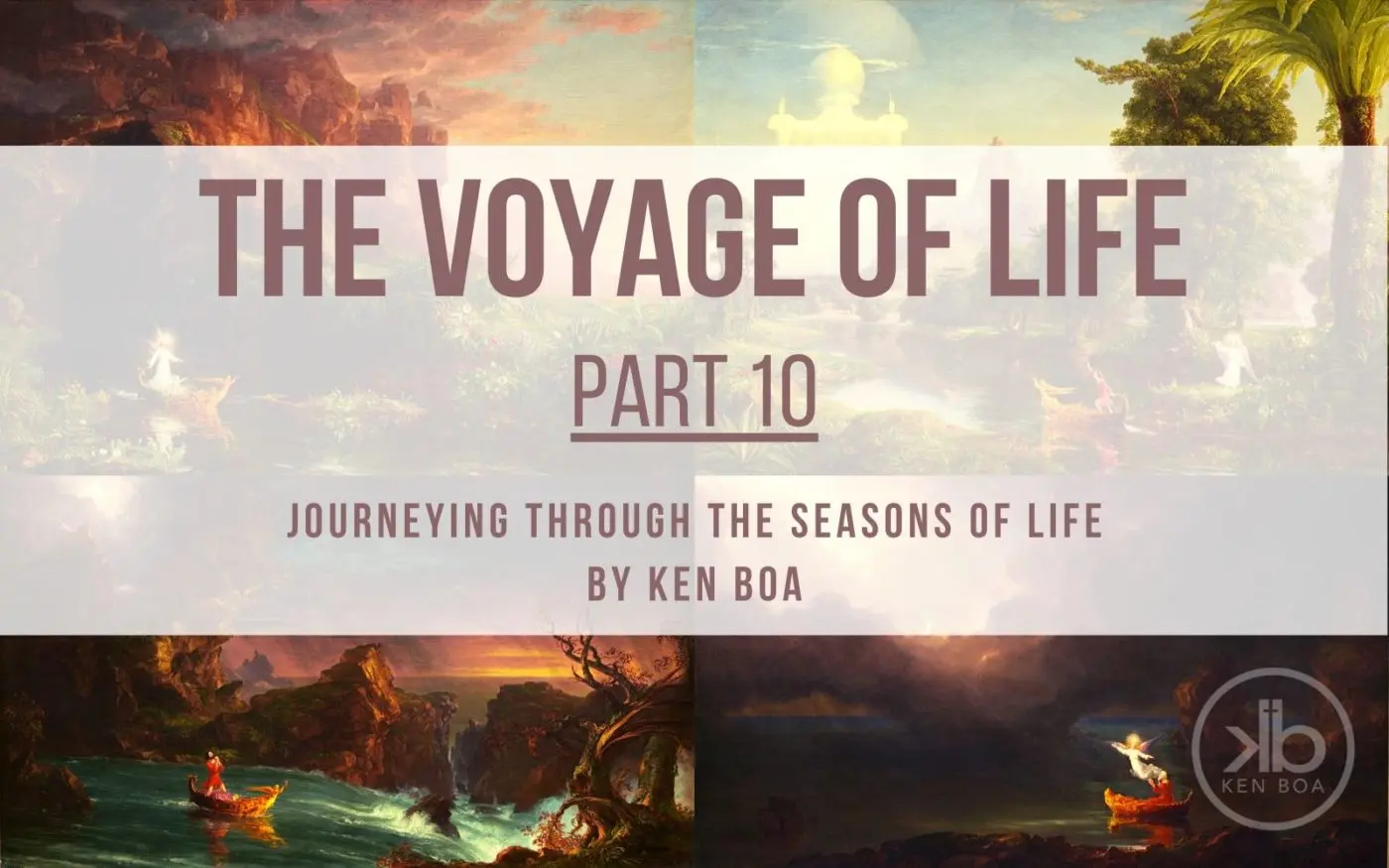How do we live with an eternal perspective—that is, how do we live in light of eternity? After all, our telos should affect our work and relationships on earth. We live this way by pursuing wisdom, which begins by cultivating a fear of the Lord. And that fear is developed, in part, by taking in God’s Word as well as by engaging with it on a personal level and praying it back to Him.
Key to living wisely, too, is understanding we’re not defined by our past, the good parts or the parts over which we feel remorse or regret, but by our future with Christ. Looking forward with anticipation to that future was the Christ-centered perspective held by Thomas Cole that undergirds his Voyage of Life paintings. As we move from childhood to old age, on this “river” of life (a constant in all four paintings), we are moving to a glorious future, an “end without the end” (as Augustine put it in his conclusion to The City of God).
Following are a few thoughts and concepts that Ken explicates in this session as he ties together some of the themes of this series:
- We are no longer defined by the pain of our bounded past but by the joy of our unbounded future.
- Wisdom lives in the dilated process of anticipation.
- The more we crave the next world, the less we covet this world.
- True fame lies not in cognition, but in reception; not in how many people know us, but in the invisible and multiform influence of one soul upon another. Thus, real and living fame resonates in anonymous but ineffable waves of diffusion. All authentic fame is fame with God, and in the grace of hidden impact, through mutual reception.
- We are called to live proleptically—an agency in which our future (God’s present) shapes our view of our present.
- God redemptively uses false narratives to both drive and draw us to our destiny.
- Logos (truth), ethos (goodness), pathos (beauty).
- The lens of adversity clarifies eternal truth.
- Restoration requires wreckage.
- We are living on borrowed time to complete unfinished business.
- We are sojourners in the painful land of the dying in preparation for eternal bliss in the land of the living.
- Getting old isn’t an option; getting wise is. Anything worth pursuing will always be costly, but a realistic cost/benefit analysis reveals that we will only flourish by paying the dreadful price tag to gain wisdom.
- We are called to live with eternal impact in a temporal arena.
- As eternal beings and bearers of the imago Dei, God prunes us but He does not bonsai us.
- Moving from a to-do list to a to-love list.
- Think soundly, work heartily, love abundantly.
- Stop believing, hoping, and trusting in gods that don’t exist.
- This unexpected and unprecedented situation in which we find ourselves can be leveraged for our good. Having come to know the transcendent and immanent source of all things true, good, and beautiful, we can now choose the way of interior reflection, repose, restoration, renewal, and rest. Without shabbat, there is no shalom.
- It is when the externals are stripped away that we are graced with a Spirit-led appetite to embrace the eternals.
[panel style=”info” text_align=”left”]Christ’s resurrection heralded an eternal rest both for the spirit and for the body. On that day we shall rest and see, see and love, love and praise—for this is to be the end without the end of all our living, that Kingdom without end, the real goal of our present life.
—Augustine, The City of God (conclusioin)
For our citizenship is in heaven, from which also we eagerly wait for a Savior, the Lord Jesus Christ; who will transform the body of our humble state into conformity with the body of His glory, by the exertion of the power that He has even to subject all things to Himself.
—Philippians 3:20–21[/panel]
Watch part 10 in a teaching series based on the themes of Thomas Cole’s Voyage of Life. These four paintings depict the cyclical dynamics of human life, as signified by the artwork’s titles: Childhood, Youth, Manhood, and Old Age. You can view these paintings in person at the National Gallery of Art in Washington, D.C.



